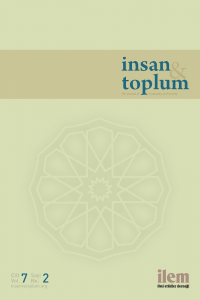Abstract
References
- 10 Fundamentals of CPEC. (n.d.). Retrieved November 14, 2016, from China-Pakistan Economic Corridor website, http://www.cpecinfo.com/10-questions-on-cpec.
- Bansal, A. (2012). Iran: Its Strategic Importance. Strategic Analysis, 36(6), 848-858.
- Berlin, D. (2011). The Rise of India and the Indian Ocean. Journal of the Indian Ocean Region, 7(1), 1-31.
- Berlin, D.L. (2006). India in the Indian Ocean. Naval War College Review, 59(2), 58-89.
- Borah, R. (2017, August 24). India-Myanmar-Thailand Trilateral Highway: A Promise to Transform the Region’s Economic Landscape. Japan Forward. Retrieved October 07, 2017, from https://japan forward.com/india-myanmar-thailand-trilateral-highway-a-promise-to-transform-the-regions-economic-landscape/.
- Bouchard, C. & Crumplin, W. (2010). Neglected No Longer: The Indian Ocean at the Forefront of World Geopolitics and Global Geostrategy. Journal of the Indian Ocean Region, (6)1, 26-51.
- Brewster, D. (2014). Beyond the ‘String of Pearls’: Is There Really a Sino-Indian Security Dilemma in the Indian Ocean?. Journal of the Indian Ocean Region, 10(2), 133-149.
- Brewster, D. (2015a). An Indian Ocean Dilemma: Sino-Indian Rivalry and China’s Strategic Vulnerability in the Indian Ocean. Journal of the Indian Ocean Region, 11(1), 48-59.
- Brewster, D. (2015b). Indian Strategic Thinking aboutthe Indian Ocean: Striving Towards Strategic Leadership. India Review, 14(2), 221-237.
- Chaudhury, D.R. (2016, April 18). India, Afghanistan and Iran Finalise Chabahar Agreement. The Economic Times. Retrieved October 05, 2017, from https://economictimes.indiatimes.com/news/economy/foreign-trade/india-afghanistan-and-iran-finalise-chabahar-agreement/articleshow/51867141.cms.
- Chellaney, B. (2009, March 4). China Fuels Sri Lankan War. The Japan Times. Retrieved October 19, 2016, from http://www.japantimes.co.jp/opinion/2009/03/04/commentary/china-fuels-sri-lankan-war/.
- Cordner, L. (2010). Rethinking Maritime Security in the Indian Ocean Region. Journal of the Indian Ocean Region, 6(1), 67-85.
Abstract
This article aims to explicate Sino-Indian strategic rivalry for regional influence in the Indian Ocean Region (IOR). For this purpose, it focuses on actors’ actions, which can be interpreted as acts of strategic competition. First of all, it examines Chinese attempts to increase its strategic and economic influence in the region through establishing strong economic and military ties with regional countries including Bangladesh, Myanmar, Sri Lanka, and Pakistan and some connectivity projects like CPEC and BCIM-EC as a part of the Belt and Road Intiative (BRI). Secondly, it investigates Indian counter initiatives as a part of the ‘Act East Policy’ and ‘Neighbourhood First Policy’, for strenghtening its political, economic and military ties with the USA and its neighbouring countries such as Iran, Myanmar, Sri Lanka and some connectivity infrastructure projects like the Kaladan Multi Modal Transit Transport Project and the India-Myanmar-Thailand Trilateral Highway. The article argues that although it seems to be a spatial rivalry for gaining and maintaining a total control over the same territory, it is indeed more about a positional rivalry for regional influence, while China seeks to improve its relative position in the IOR, India tries to maintain its relatively advantageous and pre-eminent position in the region.
References
- 10 Fundamentals of CPEC. (n.d.). Retrieved November 14, 2016, from China-Pakistan Economic Corridor website, http://www.cpecinfo.com/10-questions-on-cpec.
- Bansal, A. (2012). Iran: Its Strategic Importance. Strategic Analysis, 36(6), 848-858.
- Berlin, D. (2011). The Rise of India and the Indian Ocean. Journal of the Indian Ocean Region, 7(1), 1-31.
- Berlin, D.L. (2006). India in the Indian Ocean. Naval War College Review, 59(2), 58-89.
- Borah, R. (2017, August 24). India-Myanmar-Thailand Trilateral Highway: A Promise to Transform the Region’s Economic Landscape. Japan Forward. Retrieved October 07, 2017, from https://japan forward.com/india-myanmar-thailand-trilateral-highway-a-promise-to-transform-the-regions-economic-landscape/.
- Bouchard, C. & Crumplin, W. (2010). Neglected No Longer: The Indian Ocean at the Forefront of World Geopolitics and Global Geostrategy. Journal of the Indian Ocean Region, (6)1, 26-51.
- Brewster, D. (2014). Beyond the ‘String of Pearls’: Is There Really a Sino-Indian Security Dilemma in the Indian Ocean?. Journal of the Indian Ocean Region, 10(2), 133-149.
- Brewster, D. (2015a). An Indian Ocean Dilemma: Sino-Indian Rivalry and China’s Strategic Vulnerability in the Indian Ocean. Journal of the Indian Ocean Region, 11(1), 48-59.
- Brewster, D. (2015b). Indian Strategic Thinking aboutthe Indian Ocean: Striving Towards Strategic Leadership. India Review, 14(2), 221-237.
- Chaudhury, D.R. (2016, April 18). India, Afghanistan and Iran Finalise Chabahar Agreement. The Economic Times. Retrieved October 05, 2017, from https://economictimes.indiatimes.com/news/economy/foreign-trade/india-afghanistan-and-iran-finalise-chabahar-agreement/articleshow/51867141.cms.
- Chellaney, B. (2009, March 4). China Fuels Sri Lankan War. The Japan Times. Retrieved October 19, 2016, from http://www.japantimes.co.jp/opinion/2009/03/04/commentary/china-fuels-sri-lankan-war/.
- Cordner, L. (2010). Rethinking Maritime Security in the Indian Ocean Region. Journal of the Indian Ocean Region, 6(1), 67-85.
Details
| Primary Language | English |
|---|---|
| Subjects | Political Science, International Relations |
| Journal Section | Research Articles |
| Authors | |
| Publication Date | December 15, 2017 |
| Published in Issue | Year 2017 Volume: 7 Issue: 2 |


